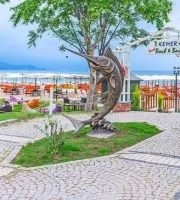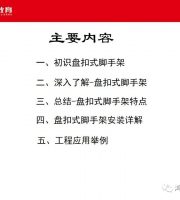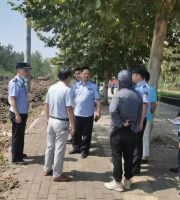The dilution ratio is too high.
the low emulsion quality and high quality emulsion cost are higher.
Causes of a large number of uneven plastering lines: the large area of cement mortar causes slow drying time, which will produce cracking and hollowing; Mt-217 bentonite is used in real stone paint, which is smooth and easy to scrape.
Solution: in order to prevent this situation, avoid coating too thick and brush evenly.
1.
Solution: slight blistering of the paint film can be polished with sandpaper after the paint film is dry, and then the finish paint can be added; In case of serious blistering of the paint film, the paint film shall be removed, and the causes of blistering shall be treated after the base course is dry, and then the real stone paint shall be sprayed.
Phenomenon and main causes of poor water resistance in case of water whitening: some real stone lacquers will obviously turn white after being washed and soaked by rain, and return to their original state after sunny weather, which is a direct manifestation of poor water resistance of real stone lacquers.
05 after the foaming paint film is dry, there are bubble spots with different sizes on the surface.
4.
Excessive thickener manufacturers often add a large amount of carboxymethyl cellulose and hydroxyethyl cellulose as thickeners when manufacturing real stone paint.
Causes: 1 The base course is wet, and the water evaporation causes the paint film to blister.
2.
Improper use of driers.
3.
06 peeling (also known as undercutting) the reason for the peeling phenomenon is that the primer is not completely dry during brushing, and the diluent of the surface layer swells the lower primer, causing the paint film to shrink and peel.
The primer is not fully dry, and the topcoat is applied in case of rain.
07 paint can often be found hanging or dripping from the wall at the construction site, forming a tear like or corrugated appearance, commonly known as tears.
Solution: in the construction process, we must comply with every construction step to avoid destruction of cross contamination.
When applying the second layer of paint, the first layer is not fully dry.
2.
2.
If the paint film has been formed, but there is still sticking finger phenomenon, it is called back sticking.
Improper coating material selection.
The surface of base course is not clean.
When the primer is dry, gas is generated to jack up the topcoat.
2.
Causes: 1 The paint film is too thick at one time.
3.
2.
Causes: 1 The paint film is too thick.
Solution: 1 Apply several times, one thin layer at a time.
The water absorption rate of the paint film is relatively large and the bonding strength is reduced correspondingly.
These substances are water-soluble or hydrophilic.
low quality emulsion or low price emulsion, in order to increase the stability of emulsion, will often add excessive surfactants, these surfactants will greatly reduce the water resistance of the emulsion itself.
Causes: 1 The paint film is too thick and the surface shrinks.
At the same time, we can choose the auxiliary coating which has anti-aging, high temperature resistance and strong radiation resistance, and can also ensure the reduction of cross contamination.
If there is leakage, the leakage problem should be solved first.
02 pulverization: the paint film becomes powdery after coating: 1 The weather resistance of coating resin is poor.
If the primer is not applied correctly, the surface will be peeled off or the paint coating will be caused by poor surface treatment.
2.
3.
3.
2.
09 severe cross pollution causes: the distribution of the surface layer on the grid was not noticed during the construction process, resulting in shape off rolling.
Bad weather.
The temperature is too high during drying.
5.
Brush directly on the old paint surface that has not been polished.
The coating remains in the coating after film formation, which greatly reduces the water resistance of the coating..
08 wrinkling: the paint film forms undulating wrinkles.
Solution: the coating construction shall be carried out according to the specified time interval.
Manufacturers only add a small proportion of emulsion to save costs, which makes the paint loose and not dense enough after drying.
Once it is in rainy weather for a long time, the rain will permeate the paint film, resulting in the whitening of the genuine stone paint.
The interval between two coats of paint must be sufficient to ensure that the second coat of paint can be applied after the first layer of paint film is completely dry.
Solution to pulverization: first clean up the pulverization, then prime with sealing primer with good performance, and then re spray real stone paint with good weather resistance.
03 causes of discoloration and fading: 1 The humidity in the substrate is too high, and the water-soluble salt crystals cause discoloration and discoloration on the surface of the wall.
The temperature is too low during painting, resulting in poor film formation.
3.
Solution: in case of this phenomenon during construction, wipe or shovel the problematic surface first, let the cement dry completely, and then apply a layer of sealing primer and select good real stone paint.
3.
The coating shall not be too thick.
The paint film with slow drying or serious back adhesion shall be cleaned with strong solvent and sprayed again.
Reduce the dilution ratio.
3.
4.
4.
There will be various problems in the construction of exterior wall coating.
Too much water is added to the coating during brushing.
The following Xiaobian will share with you the common problems and solutions in the construction of real stone paint.
The inferior genuine stone paint is not natural colored sand, and the base material is alkaline, which infringes on the pigment or resin with weak alkaline resistance.
Solution: carry out average grid treatment, and evenly mix the mortar during the plastering of the foundation house.
Press it by hand and feel slightly elastic.
2.
The finish paint shall be applied after the primer is completely dry.
01 slow drying and tack back coating are called slow drying if the paint film does not dry after the specified time.
The surface of base course is not completely dry.
Treatment method: 1 For slight slow drying and back sticking, ventilation can be strengthened and the temperature can be increased appropriately.
During spraying, there is water vapor in the compressed air, which is mixed with the coating.
3.
Polish the old paint surface of the object to be brushed with sandpaper.
10.
Then peel off the fallen paint and loose substances, fill the defective surface with durable putty, and then seal the primer for priming.
Poor wall surface treatment.
Solution: in this case, the wall should be checked for leakage.
2.
Brush the second coat of paint before the previous coat of paint is dry.
11.



